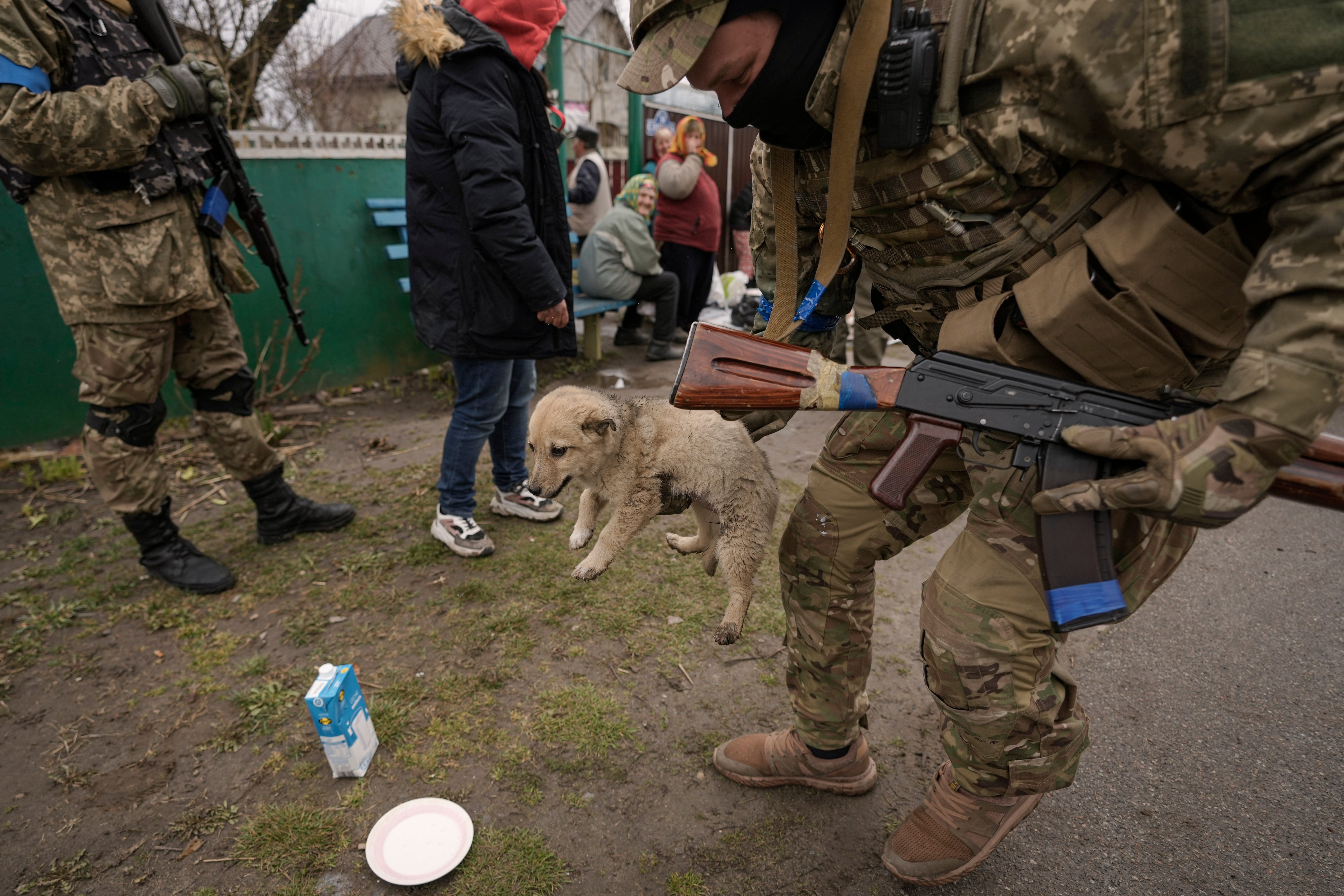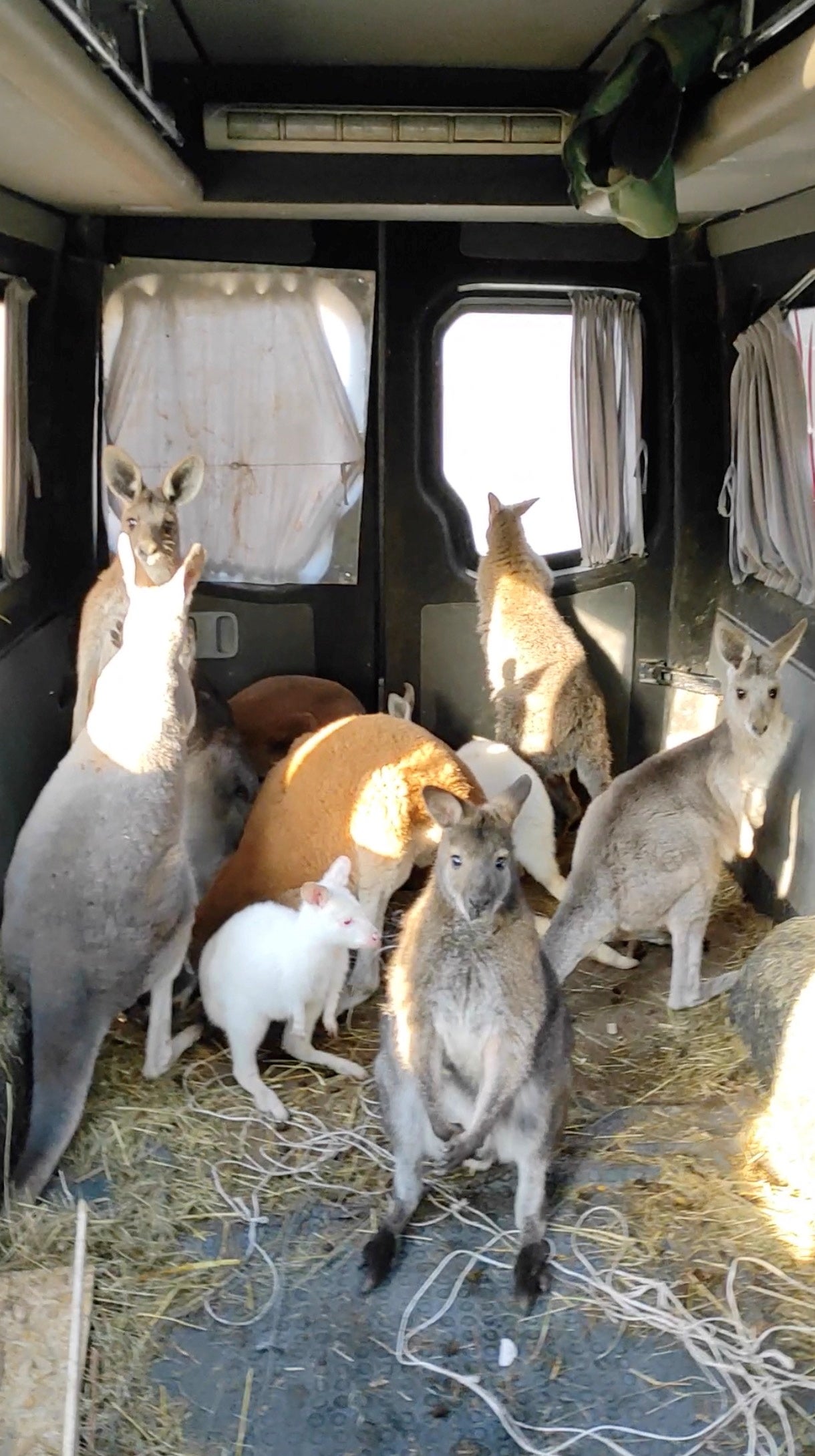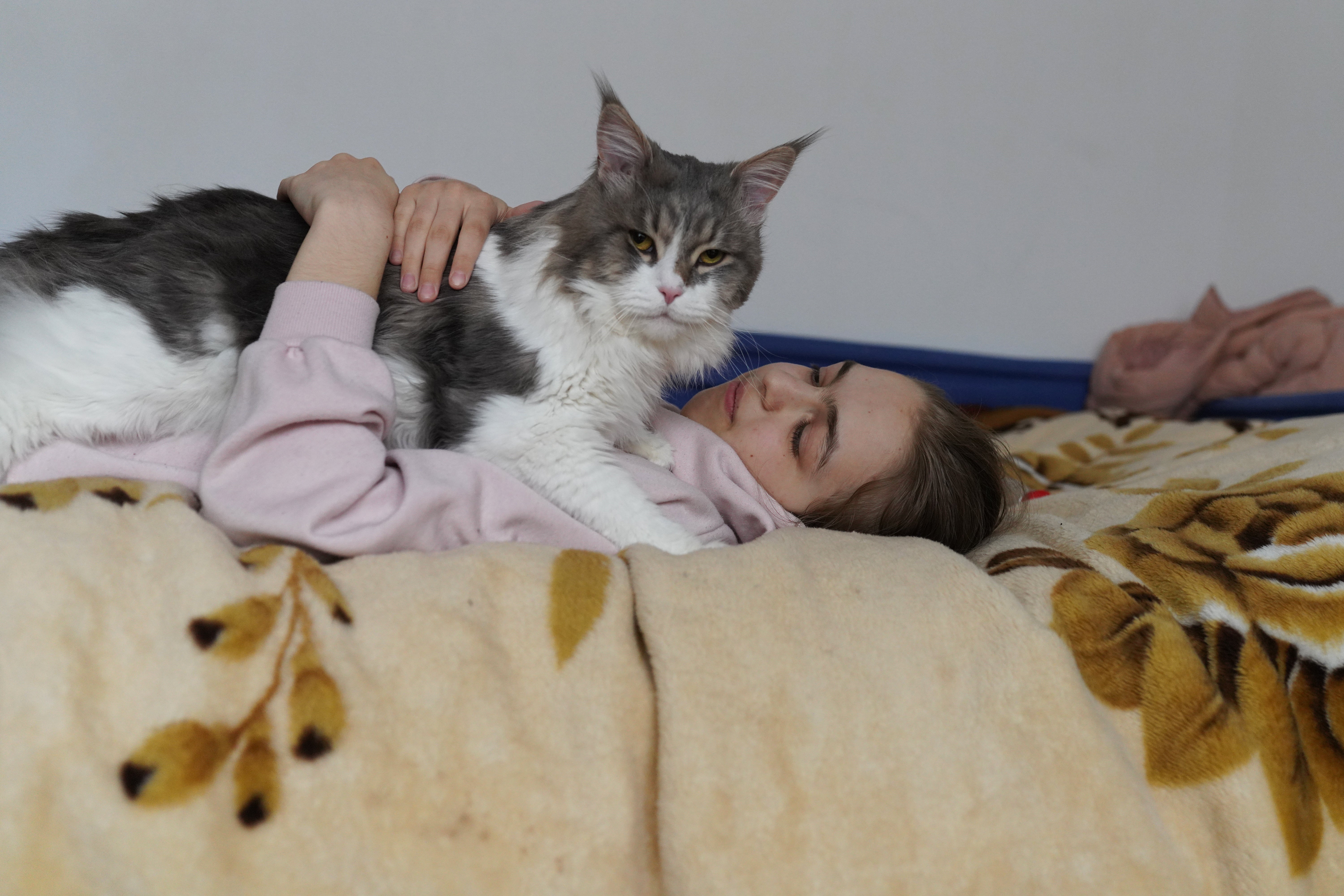Pet rescue: Russia’s invasion takes huge toll on Ukraine’s animal, as well as human population
Cats, dogs, hamsters and kangaroos are among the animals who have been rescued as the impact of the conflict is felt far beyond the human population, reports Sofia Barbarani

Since Russia invaded Ukraine more than a month ago, countless images of exhausted civilians fleeing war with their pet animals have surfaced. From cats and dogs to guinea pigs, hamsters and even foxes – Ukraine’s love of animals stood out against the backdrop of death, displacement and destruction.
But over the last couple of weeks, photographs of furry pets tucked safely inside their owners’ puffer jackets have been giving way to images of dead dogs piled on top of each other, animal shelters damaged by shelling and collapsed ponies – revealing the extent of the impact of war on Ukraine’s pets and wildlife.
In 2015 PetFood Industry estimated that there were roughly 750,000 dogs and 5.5 million cats in Ukraine, in addition to cattle, wild and zoo animals across the country’s vast expanse.
In the northeastern city of Kharkiv, the scene of hundreds of civilian deaths, the founder of the city’s Ecopark has been grappling with the thought of having to euthanise large animals, unless they can be evacuated.
“Feldman Ecopark no longer exists. Now this can be said quite definitely. Yesterday and today it was again subjected to massive shelling and bombardment. Infrastructure destroyed, enclosures destroyed,” Alexander Feldman says in a statement.
“The biggest problem is large predators. Their enclosures miraculously still retain their integrity, but one more shelling – and the lions, tigers, bears, distraught with fear, may be free and go towards Kharkiv or to nearby villages.”
Feldman has been working to find a way to evacuate the animals before they are either killed in the crossfire or escape and become a threat to civilians. “Failing that, the only option left to us is to put the predators to sleep,” adds Feldman.
Not long after Feldman’s distressed call for help, Ukraine’s animal rights organisation UAnimals asked the park owner to spare the animals and wait for help.
“UAnimals has already joined the animal rescue and urges Alexander Feldman not to make hasty decisions and not to kill animals,” the organisation stressed. According to a statement issued on Tuesday by the group, UAnimals are moving to evacuate some of the animals to a sanctuary.

Other large animals have also been lucky enough to have found a way out of war.
In late March, Simba the lion and a wolf named Akyla were evacuated from an undisclosed zoo in Ukraine before being driven thousands of kilometres to Romania with the help of organisations and two British men.
Tim Locks, one of the British volunteers, documented his four-day journey on Instagram.
“It took three hours to load both animals into the back of a Ford Transit minibus with the seats removed,” the 45-year-old wrote on social media.
Locks, who delivered aid to civilians before driving to the zoo with his teammate, is no stranger to volunteering in conflict zones. In 2015 he travelled to the Kurdistan region of Iraq to lend a hand in the fight against Isis where he lived for over a year.
“Everyone needs evacuating and there are plenty of teams looking after people. Strangely, no one else wanted to do this… so this is what we do,” Locks says.
“I couldn’t find a driver from Romania to go and help, also not from Ukraine, so these guys were absolutely fabulous – they put their lives in danger,” Roxana Ciornei of the Romania-based animal rights group Patrocle’s House told AFP.
Today Simba and Akyla are safe in Romania and will soon be transferred to a sanctuary. But as stories of human courage emerge, so do accounts of Ukrainians who risked and lost their lives to protect animals.
Local news outlet Kyiv Independent in early March reported the death of three volunteers who had ventured into Bucha to deliver dog food to a shelter. At the time Bucha was under Russian control and the volunteers’ vehicle came under fire. Serhiy Ustymenko, 25, Maxym Kuzmenko, 28 and Anastasia Yalanska, 26 were all killed.
Just five kilometres from Bucha in Irpin, actor Alexei Surovtsev drove by plumes of smoke and bullet-riddled cars to save cats, dogs, hamsters, and rabbits.
As Russian forces retreated this week from both Irpin and Bucha, evidence of the atrocities committed against civilians has come to the fore, including a mass grave and tied bodies of people shot at close range.
Among the carnage of civilians and destroyed buildings, the images on Sunday of dead dogs piled on top of one another in the nearby town of Borodyanka, added to the anger felt by many.
After more than a month in their cages without access to food or water more than 300 dogs out of 458 died of thirst and hunger when volunteers were unable to return to the shelter due to ongoing clashes, UAnimals explained.

“These dogs died with a painful death of hunger and thirst during Russian occupation,” the head of non-profit Center for Civil Liberties Oleksandra Matviichuk wrote on Twitter.
In the country’s western city of Lviv, where millions of displaced people transit on their way to Poland, cat carriers dot the concrete floor and shivering dogs on leashes wait patiently beside their owners.
In early March several displaced people waiting to board trains to Poland recalled the pain of leaving relatives behind.
One woman recalled how her mother had been unable to travel because of the large number of dogs she had and like many others chose to remain on the frontline of Russia’s war on Ukraine with her four-legged family members.






Join our commenting forum
Join thought-provoking conversations, follow other Independent readers and see their replies
Comments